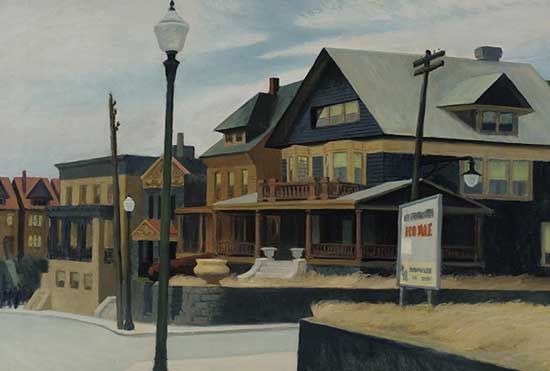A trial court in Indiana recently dismissed a lawsuit challenging the proposed sale of three works of art by Valparaiso University: Rust Red Hills by Georgia O’Keefe, Mountain Landscape by Frederic Edwin Church, and The Silver Veil and the Golden Gate by Childe Hassam. This controversy highlights many of the issues surrounding the deaccession of art by American museums. In ruling that the former director of the Brauer Museum of Art at Valparaiso and the museum’s key benefactor both lacked standing to sue the university over the planned sale, the decision tracked other recent results about non-profit oversight, highlighting just how critical the engagement of a state’s Attorney General is.
Whatever the merits of this rule on standing are, however, the university seems to be violating a condition of the 1953 agreement it made to obtain these works of art, yet nine months on the Attorney General has not exercised his undisputed prerogative to stop it. Non-profit governance is hard in a world of finite charitable resources. But universities caught in the arms race of new dorms and laboratories would do well to consider the core mission and what makes it possible. The chance to sit with a painting by Hassam, Church, or O’Keefe was well recognized by the original benefactor Percy Sloan, and this university agreed to abide by that condition. It should keep its word. Selling art to plug budget holes is like eating the seed corn; it robs the future.
Read More
Topics:
Rose Art Museum,
Supreme Judicial Court,
Deaccessioning,
New York Times,
Brandeis University,
Berkshire Museum,
Frederic Edwin Church,
Attorney General,
Mountain Landscape,
The Silver Veil and the Golden Gate,
Georgia O'Keefe,
Childe Hassam,
Rust Red Hills,
Breuer Museum of Art,
Percy Sloan,
Junius Sloan,
Sara Sloan,
Justice David Lowy,
Todd Rokita,
José Padilla
I am honored to be one of the presenters at an upcoming symposium at Brandeis University entitled "Looted Art for Sale." This interdisciplinary conference will provide an international perspective on the last twenty years of art recovery. Speakers include former Ambassador Stuart Eizenstat, a primary leader in the creation of U. S. restitution policies, Hector Feliciano, Professor Meike Hoffmann, Victoria Reed, Inge Reist, and Lucian Simmons. The filmmaker, John Friedman, will screen excerpts from his forthcoming documentary on Tuesday evening, March 20th (6:30pm), in Edie & Lew Wasserman Cinematheque, “Restitution: Art and Memory.”
Read More
Topics:
Nicholas M. O'Donnell,
Victoria Reed,
Brandeis University,
Lucian Simmons,
Hector Feliciano,
Rosenberg Institute of Global Finance,
Brandeis International Business School,
Inge Reist,
Stuart Eizenstat,
Looted Art for Sale,
Brandeis Center for German and European Studies
Reflecting on the recent argument by the Detroit Institute of Arts that the city of Detroit cannot legally sell, let alone be forced to sell, the artwork in the museum to satisfy creditor, some overlapping terminology creates the possibility of an important confusion. Particularly in the realm of deaccessioning, this distinctions are quite important. Meanwhile, the state of Michigan today approved its part of the “Grand Bargain” to subsidize the bankruptcy to avoid sale or encumbrance of the artwork.
Read More
Topics:
Donn Zaretsky,
Roberta Smith,
Rose Art Museum,
Lee Rosenbaum,
Columbia University,
Deaccessioning,
Detroit Institute of Arts,
Isabella Stewart Gardner Museum,
Association of Art Museum Directors,
Michigan,
Albright-Knox Gallery,
New York Times,
Detroit Bankruptcy,
AAMD,
Edward Hopper,
Pennsylvania Academy of Fine Arts,
grand bargain,
Brandeis University,
Barnes Foundation





